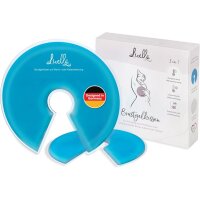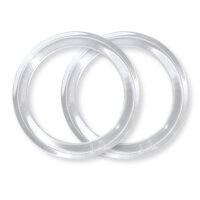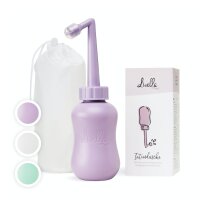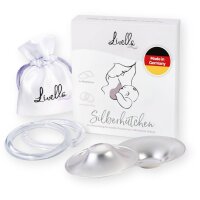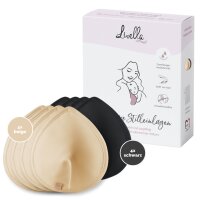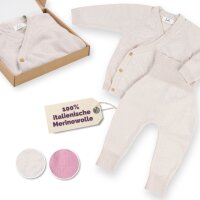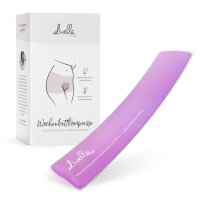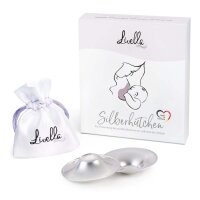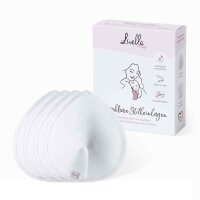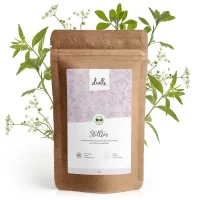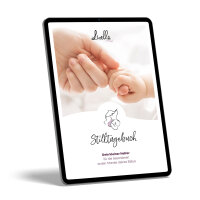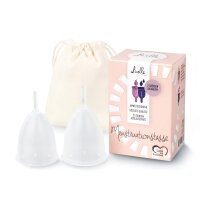Even the good things in life come to an end. Unfortunately, this is also the case with breastfeeding. One day you’re still in the middle of a loving breastfeeding relationship with your baby, and the next day it's time to think about weaning.
Especially young mothers who are breastfeeding their first child usually have a whole lot of questions about weaning. When to stop breastfeeding? How do I transition from breastfeeding to bottle feeding? How painful is it to stop breastfeeding? And how long does it take to wean off breastfeeding?
Read on as we answer all your questions about weaning and give you some great tips on how to stop breastfeeding.
Table of contents
When to start weaning?
How long does it take to wean off breastfeeding?
Common issues when weaning a baby
How to wean a baby?
Transitioning from breastfeeding to bottle feeding as part of the weaning process
Tips for weaning without pain
What about baby-led weaning?
Final tips for successful weaning
When to start weaning?
The first question that usually comes up is when to stop breastfeeding. The World Health Organisation recommends exclusive breastfeeding for the first 6 months of life. And even after the introduction of solid foods, breastfeeding should be continued for up to two years and beyond. From a biological point of view, breastfeeding can be continued up to the age of seven and it would still be normal.
In reality, however, continued breastfeeding isn’t always possible for such a long time. Possible reasons include the mother’s return to work or her wish for more independence and time for herself. Persistent breastfeeding pain can also lead to early weaning.
Not to forget that it’s not just the mother who may wish to stop breastfeeding. More often than not, babies start to refuse the mother’s breast at some point. As they get older, their surroundings become much more interesting to them and they no longer want to stop discovering their surroundings to breastfeed.
The decision to start weaning is a highly personal one that depends on many different factors. If the time feels right for you, you should go ahead and begin to wean your little one off your breast. However, keep in mind that there are phases in your baby's development when weaning is not recommended. This includes phases where your baby is sick or upset, since breast milk also serves as a natural comforter.

How long does it take to wean off breastfeeding?
If you want to do it right, weaning takes several weeks—or even months. The longer the weaning process, the smoother the transition for both mum and baby. For some mothers, however, weaning has to happen quickly. This can be the case if mum and baby have had a traumatic experience or if the mother needs or wants to return to work sooner than initially planned.
If gradual weaning isn’t an option, it’s important to regularly express breast milk by hand or with the help of a breast pump so that the breasts don’t become too full while the body gradually decreases the milk production.
Common issues when weaning a baby
Weaning is similar to latching on and positioning in that it needs to be done right to avoid problems. Common issues when weaning a baby include:
- Your baby is upset by the changes.
- Your milk supply doesn’t decrease which leads to engorged, sore breasts.
- You feel down because your baby suddenly loses interest in breastfeeding.
- Sudden weaning can lead to blocked milk ducts or even mastitis.
- Your baby shows digestive problems or other physical complications due to the nutritional changes.
- Weaning triggers hormonal changes in the mother’s body which can lead to anxiety and depression.
How to wean a baby?
Now that we know some common issues that may arise when children are weaned off their mother’s breast, it’s time to address the central question: How to wean a baby?
The most important thing to keep in mind is that it should happen gradually. Putting a sudden end to breastfeeding can be hard on the physical and emotional level, both for you and your baby, which is why this approach is best avoided. But even when proceeding gradually, you should make sure to give your baby lots of love and affection and allow for extended periods of physical closeness.
Here are some pointers on how to stop breastfeeding step by step:
- Breastfeed less often: Cutting back on the number of feedings per day is the first step towards successful weaning. But remember not to cut more than one feed per day, and wait at least two or three days before you cut another one.
- Replace breastfeeding with formula if needed: Depending on your baby’s age, you will have to replace feeding sessions with formula to ensure he or she gets all the necessary nutrients. Remember that breast milk (or formula) is the main source of energy and nutrition throughout the first year.
- Offer other food or distractions: Offering your baby a snack or a toy can distract him or her from wanting to breastfeed. Of course, you need to know the signs that your baby will want to breastfeed shortly in order to anticipate a breastfeeding session.
- Change your routine: Making changes to your daily routine can also help distract your baby from wanting to breastfeed. This especially includes avoiding the places where you typically breastfeed.
Transitioning from breastfeeding to bottle feeding as part of the weaning process
As we’ve already mentioned, milk remains your baby’s most important source of nutrition throughout the first year of life. This means that dropped breastfeeding sessions need to be replaced by formula feeds if you decide to start weaning before your little one reaches the age of one—especially if he or she still struggles with solid foods.
For children under six months, formula milk should be given with a bottle, while older children might be able to drink from a cup. In any case, the switch from breastfeeding to bottle or cup feeding should happen gradually. In the beginning, it’s best to only feed very small amounts of milk with the bottle (or cup)—or even to just start with a little bit of water.

Tips for weaning without pain
Breast pain is one of the main dangers of abrupt weaning. The best way to prevent sore breasts is to wean your baby gradually. But even then it’s possible for your breasts to become full and engorged if your body struggles to regulate your milk supply.
Here are a few tips on how to stop breastfeeding without pain:
- Express milk: Use a breast pump or express a little bit of milk with your hands to relieve full breasts.
- Apply cooling pads: Ice packs or cold breast gel pads can help relieve pain and inhibit milk production.
- Take painkillers: Painkillers like ibuprofen are safe to take while breastfeeding
What about baby-led weaning?
Baby-led weaning is when your baby is allowed to decide what, when and how much he or she wants to eat. It’s basically an approach to introducing your baby to solid foods where your baby sets the pace and could be considered an alternative to traditional weaning methods.
In practice, baby-led weaning means:
- Watching out for signs that your baby might be interested in trying solid foods Giving your baby different finger foods to try as they please instead of spoon-feeding them pureed foods
- Having your baby join family meals and letting them self-feed
- Gradually cutting back on breastfeeding as solids become a more important part of the baby’s diet
- Soft ripe fruits like bananas or pears
- Roasted or steamed vegetables like sweet potatoes or carrots
- Shredded strips of meat
The benefits of baby-led weaning include exposure to diverse foods and valuable social interactions with the rest of the family during meal times.
Final tips for successful weaning
There is no right or wrong when it comes to weaning—at least not as long as you and your baby are comfortable with the changes. Still, a few additional tips can’t hurt. Here’s a summary of the most important aspects to keep in mind when stopping breastfeeding:
- Give yourself and your baby time.
- If possible, don’t start weaning under difficult circumstances.
- Make up for dropped feeding sessions by giving your baby lots of love and attention. You can also give them a soft baby blanket to provide additional comfort and make them feel safe.
- Cuddle your baby often to allow for physical closeness.
- Cool your breasts if you suffer from engorgement or any other type of breast pain.
- Ask your partner, a parent or a friend to feed your baby if you decide to change to bottle feeding.
And a last word on weaning: Breastfeeding problems such as sore nipples, blocked milk ducts and mastitis often lead to premature weaning when really they shouldn’t. Sore nipples can be treated using silver nursing cups, and for breast problems such as mastitis, continued breastfeeding is a crucial factor for treatment success. If you consider weaning your baby purely because of physical discomfort, you should talk to your midwife or get professional breastfeeding support from a lactation consultant.
References
- Infant and young child feeding (who.int)
- when_to_wean_clin_obstetrics_2004.pdf (weebly.com)
- How to stop breastfeeding - NHS (www.nhs.uk)
- When Breastfeeding Ends Suddenly - La Leche League GB
- Breastfeeding cessation and symptoms of anxiety and depression: a longitudinal cohort study - PubMed (nih.gov)
- Weaning: How To - La Leche League International (llli.org)
- Thinking of Weaning? - La Leche League GB
- Your baby's first solid foods - NHS (www.nhs.uk)
- A descriptive study investigating the use and nature of baby‐led weaning in a UK sample of mothers (wiley.com)
- Baby-Led Weaning: What You Need to Know – Cleveland Clinic


